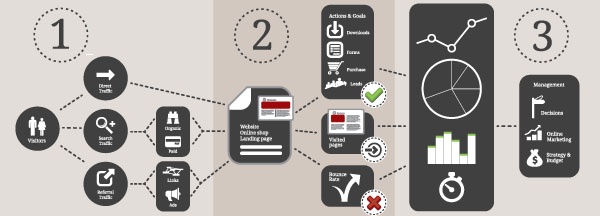Data And Analytics Not Gut Feelings Key Successful Marketing Programs
Table of contents
Increasingly, senior business leaders are demanding more tangible and quantifiable metrics, particularly from their marketing teams. According to a 2014 survey from the MIT Sloan Management Review in collaboration with the SAS Institute, six in 10 professionals from around the world agree there is pressure from senior management for their organization to become more data-driven and analytical. And, according to a 2014 survey from Spencer Stuart, senior marketing leaders feel that analytical orientation will become a more important skill for CMOs to possess in the future, while creativity will become less of a priority.

This concept of developing a more analytical marketing approach is something marketing teams are paying heed to. In an article that ran in Harvard Business Review, Adele Sweetwood, Senior Vice President of Global Marketing and Shared Services at SAS and author of the book, “The Analytical Marketer: How to Transform Your Marketing Organization,” noted that the most significant culture shift today for marketing teams is adopting an analytical marketing approach.
Traditionally, many marketers still rely on gut feelings to make decisions, says Sweetwood, without availing themselves of technology that exists today to provide a quantitative perspective to measuring marketing efforts. She notes that it is important to effectively measure the value of marketing efforts, including marketing activities’ impact on the sales pipeline and revenue. Even more powerful is to leverage analytics for predicting those marketing activities that could work, and use insights into the data to improve customer experience.
At SAS, her team compiles a structured data source that pulls together all the data that used to exist in spreadsheets, and updates the data daily. This helps the marketing department better engage with customers because it enables them to see how all their behaviors are connected.
Sweetwood also recommends using stories to convey data insights. Specifically, by adding analytics and data visualization tools to your marketing toolbox, an organization can collect stories from the data that “you can diligently cultivate and harvest.” And, you can see how the narrative changes as you make changes to the data.
She notes that marketing teams should ask “what if” questions to uncover other stories they can begin to tell. This enables a shift from being reactive to being proactive, thus creating a culture that is focused on the future rather than the past. “As your organization becomes better at storytelling, you empower the team to ask more questions and explore data differently to expand on the themes you’ve uncovered.”
It’s also important for marketers to rely on a variety of campaign metrics rather than one set of metrics. Sweetwood states that, while marketers used to focus on the response rate to a specific campaign as something to react to, reacting to metrics isn’t enough in the new marketing world.” She notes that “customers now have greater expectations about what marketers should know and how you interact with them.”
She provides the example of the type of information to gather from a sales lead who originated from a live event a company hosted:
- What web pages did they view after the conference?
- How long was each visit to the website?
- What assets did they download?
- What other activities did they participate in? (e.g. webcasts, other conferences, sales calls)
And, the type of data to track to assess campaigns:
- Emails sent
- Open rate
- Click-through rate
- Opt-out rate
- Conversions (whole number of those who completed registration forms to receive the promoted asset)
- Conversion rate
- Lead-generated SSO’s (as Sweetwood tells it, this is an internal metric that measures the number of conversions scored as leads who progress to become a sales opportunity)
- Completed leads to lead-generated SSOs rate (again, an internal metric that measures the percentage of conversions scored as leads who then progress to become a sales opportunity)
When marketers fail to see the expected response rate from a targeted market segment, metrics from the above process can help determine what the data is saying so quick adjustments can be made to turn a campaign that is failing into one that can succeed.
As marketing organizations compile more and more data, it’s important for the data to have a purpose. Focus on the insights uncovered by analytics and be open to how they can drive a successful campaign. Why guess when you have the tools to success at your disposal.
Search








